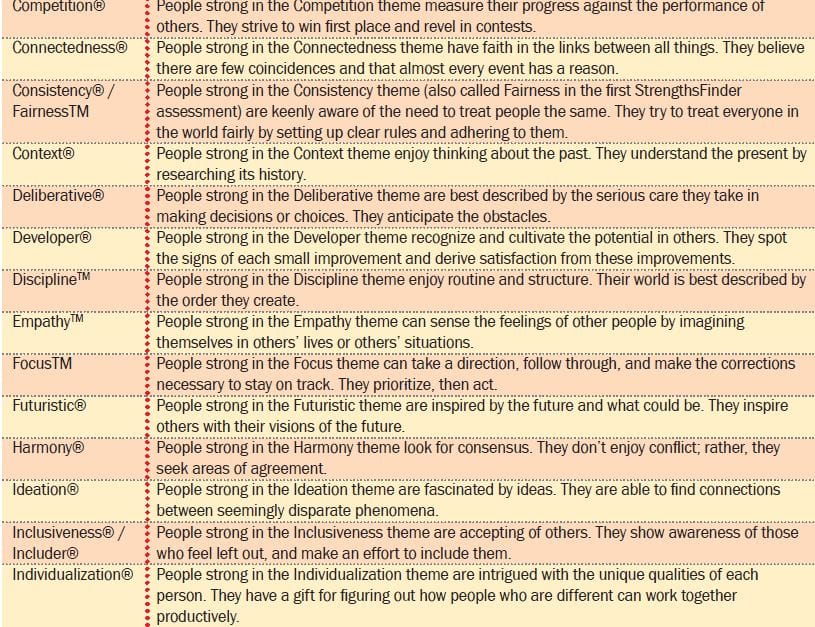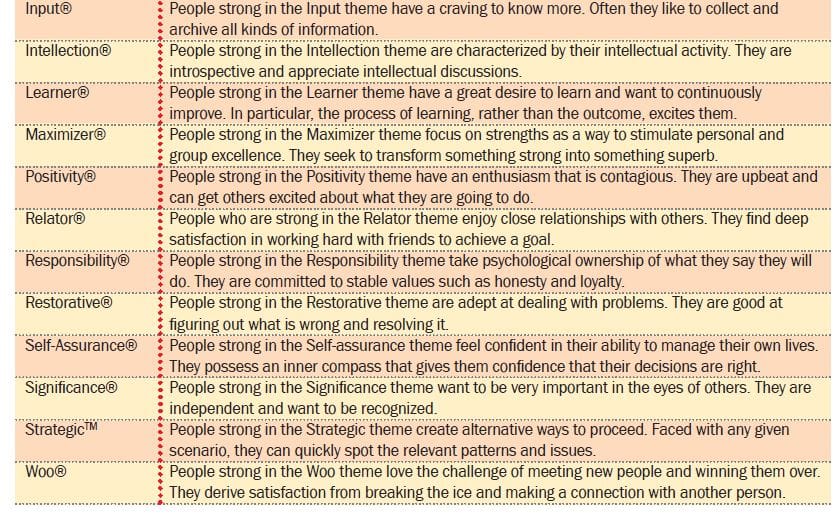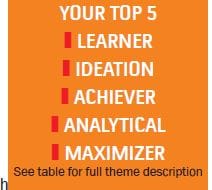Innovation and R&D
Managing and Developing People, Discovering Strengths
In Part 18-19, I listed some of the best books I have read for managing and developing people. They are:
- 1. First, Break All The Rules, Marcus Buckingham and Curt Coffman, Gallup Organization [ref. 1]
- 3. Mindset: The New Psychology of Success, Carol Dweck – recommended by Bill Gates! [ref 3]
- 4. The Happiness Advantage: The Seven Principles of Positive Psychology That Fuel Success and Performance at Work, Kindle Edition, Shawn Achor [ref 4]
- 5. Rethinking Positive Thinking: Inside the New Science of Motivation, Kindle Edition, Gabriele Oettingen [ref 5]
I also promised I will provide a summary of these books in subsequent articles. Here is the SECOND one.
Book Summary – Discover Your Strengths
The author Buckingham explains, “When you see a strength in action, you see a person’s ability to consistently provide near-perfect performance in a specific activity.”
In his first book, First Break ALL The Rules, Marcus Buckingham suggests – “Discover strengths by interviewing carefully.”
I submit this is not a good solution!
R&D Managers are not professional psychologists, anthropologists or social scientists, most of them became managers because they demonstrated good technical skills and perhaps good communication/political savvy. Most managers hardly hire half a dozen people per year, so their interviewing skills are likely to be not-so-good with perhaps a few exceptions.
R&D Managers are not social or psychology researchers, so they do not have the domain expertise to categorize their hires, scientist/engineers in social, communication, people, managerial and leadership skills.
Since they do not have a standardized list of people skills/categories, they cannot assess and rank the interviewees.
Chances are these managers will never generate enough data in 5 to 10 years to make the study scientific and feel comfortable with their assessments.
Thankfully Marcus Buckingham and his coworkers recognized these problems and therefore developed and made available a science-based test instrument to assess people’s skills and automatically categorize them. Discover Your Strengths is a book that is dedicated to the discussion of this test instrument and offers to test each person for free who buys the book ( about $15).

Here are a few points to keep in mind.
- Discover Your Strengths is an excellent trait assessment tool; it is based on test and assessment of thousands of managers.
- Strength characterization is not a pass/fail tool. Everyone is different. Everyone is strong in some areas and weak in some other areas.
- The book identifies and lists 34 characteristics shown in the Table 1. [ref. 9] Look at each strength name in the first column; most have a registered trademark symbol, indicating that the Gallup Poll uses these strengths to have specific meanings.



An Example:
Several years ago I decided to use discover-your- strengths concepts for my small software and consulting business, so I took the simple test that takes about 45 minutes. I got an 11 page report, which identified my top five strengths. The report also provided a one paragraph explanation for each of the top strengths with examples. My summary test results are shown in the sidebar and in Table 2, and designated as “Person M.” I liked the test results and its implications enough, that I made it a standard procedure. As an early start I asked my two colleagues -managers to take the same test. Their test results are shown as “Person E” and “Person F”


I was pleasantly surprised with my test results. When I took the test, I did not know my strengths. Psychologists say we develop these strengths in our early years almost unconsciously so we cannot name/label them; however, if we ask someone, a non-family member, who knows us very well, he may be able to articulate them. I think the results are dead on. The StrengthFinder Test says the top three results are likely to be 90% accurate! Two additional key points that Marcus Buckingham points out in the two books:
Now It is Your Turn:
- 1. When will you read the Discover Your Strengths and take the online test?
- 3. How will you summarize your new learning?
- 4. How will you use the learning to massively increase your productivity?
- 5. Your teams’ productivity?
So crank up your Product Development engines... Let us speedup new product development and growth rates. And let the fun begin!
References:
- 1. First, Break All The Rules, Marcus Buckingham and Curt Coffman, Gallup Organization. See also http://www.gallup.com/press/176069/first-break-rules-world-greatest-managers-differently.aspx
- 2. Discover Your Strengths, Marcus Buckingham. See also https://www.gallupstrengthscenter.com/
- 3. Mindset: The New Psychology of Success, Carol Dweck – recommended by Bill Gates!
- 4. The Happiness Advantage: The Seven Principles of Positive Psychology That Fuel Success and Performance at Work, Kindle Edition, Shawn Achor
- 5. Rethinking Positive Thinking: Inside the New Science of Motivation, Kindle Edition, Gabriele Oettingen
- 6. Ivan Bjelajac First, Break All the Rules - Key Takeaways, keytakeaways.io/books/first-break-all-the-rules/
- 7. Abhinav Gulyani, First Break All the Rules Book Summary Archives, gulyani.com/tag/first-break-all-the-rules-book-summary/
Mukul is bilingual. He speaks Chemical Engineering and Applied Statistics.
As a Senior R&D Manager, Statistics and Computer-Aided Research at BF Goodrich Chemical, he championed the use of Design of Experiments (DOE) for predictive modeling, performance optimization, scale-up, and quality control.
Currently, he is the Founder and President of FastR&D, LLC, based in Cleveland, Ohio.
Over his career, he has trained nearly 1,000 R&D scientists, engineers, and senior executives. He has led 750 DOE studies across industries including chemicals, food, polymers, plastics, pharmaceuticals, and medical devices. His projects range from scaling up a one-inch fluid bed reactor to an 18-foot production reactor, to optimizing the design of a tiny angioplasty device for renal artery denervation and blood pressure control.
Mukul has advised numerous Fortune 1000 chemical firms on innovation, rapid new product development, and managing NPD as a structured business process.
Copyright © 2025 FastR&D LLC

